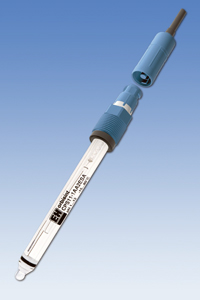Revolutionary Digital pH Sensors Announced

Accuracy is Guaranteed With the New Memosens Digital Technology
 Greenwood, IN — Endress+Hauser, Inc. announces a revolution in pH technology, Memosens digital pH sensors. These unique digital sensors are the first on the market today and offer a simply safe, reliable, informative, and user-friendly alternative to the problematic analog sensors of yesterday. The launch of Endress+Hauser’s innovative Memosens digital pH sensors sets new standards of accuracy and reliability in pH measurement.
Greenwood, IN — Endress+Hauser, Inc. announces a revolution in pH technology, Memosens digital pH sensors. These unique digital sensors are the first on the market today and offer a simply safe, reliable, informative, and user-friendly alternative to the problematic analog sensors of yesterday. The launch of Endress+Hauser’s innovative Memosens digital pH sensors sets new standards of accuracy and reliability in pH measurement.
Memosens eliminates the causes of all problems in sensor plug-in technology. These digital sensors offer the first pH measuring point with real galvanic isolation. The inductive signal transmission from cable coupling to sensor plug-in head is absolutely insensitive to moisture and soiling and guarantees correct measured values even if connected underwater!
The safe connector system of Memosens sensors enable inductive data transmission and eliminate measuring accuracy problems based on the following: corrosion, contacting problems, salt bridges, moisture, leakages, high impedance connection, and ground loops. In the event the signal flow is interrupted, safety of the data is protected through the digital data transmission by automatic error messages alerting personnel immediately.
Sensors with Memosens technology have integrated electronics that allow the ability to save calibration data and further information such as hours of operation, minimum and maximum pH values, and minimum and maximum temperature. The digital pH sensors can be calibrated under optimum external conditions in the measuring lab, which promotes easy handling. Wind and water do not affect the calibration quality or the operator. The measuring point availability is dramatically increased by the quick and easy replacement of precalibrated sensors.
These new digital sensors also offer cost saving potential. Sensors that had to be thrown away in the past can now be checked and regenerated, e.g. by suitable cleaning, under optimum conditions in the laboratory, considerably increasing sensor lifetime in the process.
Memosens sensors are available for hazardous and non-hazardous areas. They comply with all common standards such as EHEDG, 3A, 21CFR 11, SIL2, CE, ATEX, FM, FDA, etc..
SOURCE: The Endress+Hauser Group
